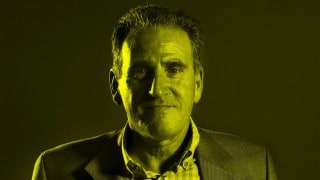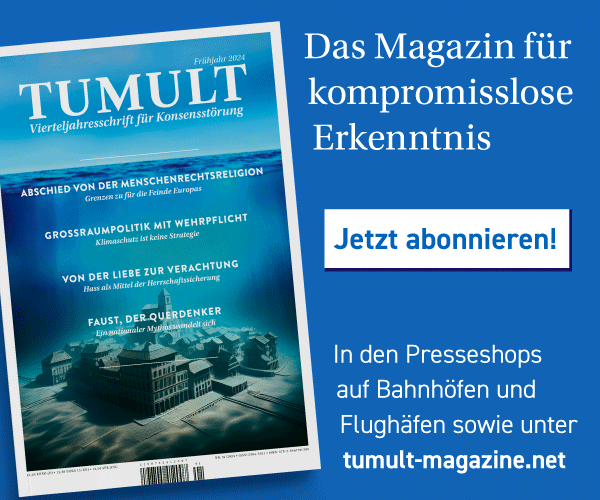Zuerst die gute Nachricht:
The most dramatic demographic shift in human history appears to be taking place in today’s Iran. Thirty years ago, as the shah was being driven into exile and the Islamic republic was being established, the fertility rate of Iranian women was 6.5—the average number of children born to an Iranian woman of childbearing age.
Today, the fertility rate has collapsed to European levels and even lower. The latest CIA fact book shows it falling from 2.2 in the year 2000 to 1.7 today, which would be considerably lower than the fertility rate of modern Britain.
It may be lower, much lower, than that. Philip Jenkins, professor of history and religious studies at Pennsylvania State University, claims from the latest U.N. data that the real fertility rate may already be the lowest in the world at 0.66 children per woman.
The implications are profound for the politics and diplomacy and power games of the Middle East and the Gulf, affecting Iran’s dreams of being the regional superpower and the tension between the Sunni and the Shiite wings of Islam. Equally important are the implications for the economic future of Iran, which will by mid-century be confronting the challenge of organizing a society with one person of working age for every old-aged pensioner.
In the meantime, it is important to understand the dynamics of this process. Shortly after the shah fell, Saddam Hussein invaded what he thought would be a disorganized and easily beaten Iran. He was frustrated by the extraordinary profligacy of the Iranians with the lives of their troops and their teenage volunteers, who launched endless human-wave attacks against the Iraqi mines, machine guns and artillery in a grisly re-enactment of the horrors of World War I. High birthrates translated into dispensable cannon-fodder.
With the end of the war, which cost something in the region of 1 million dead, the Iranian state thought again about the economic implications of high birth rates and the challenge of finding sufficient jobs for the vast numbers of young Iranians, and adopted a state policy of supporting birth control. Iran remains the only country in the world in which a young couple before marriage must both undergo courses in contraception and family planning.
At the same time, the Iranian revolution was expanding its educational system, and if the goal appears in retrospect to have been quantity rather than quality, the new opportunities were seized dramatically by young women, who now attend and graduate from universities at a far higher rate than men. Women now account for 60 percent of university students, and for far more in some sectors. In the applied physics faculty of Aziz University, 70 percent of the students are women.
“The modern middle-class families who sent their girls to school even before the revolution continued to do so after (the revolution). I think the change that took place after the revolution should be considered part of the reason behind the progress we’re seeing now,” notes the Paris-based scholar Said Peyvandi. “And that was that the traditional families who had not sent their girls to school before—because the teachers were men or the school was not Islamic—these were the girls who took the greatest advantage from the Islamization of schools, or the fact that schools were no longer mixed, as a way of justifying their presence out of the home.”
Many of these educated women have decided against marrying because they want to pursue careers, and under Iranian law a wife must obtain her husband’s approval before taking a job. Jenkins suggests the rate of female participation in the workforce in 1990 was 22 percent, only a little higher than that of Saudi Arabia. By 2005, 41 percent of the country’s employed workforce was female.
There is considerable controversy about the implications for Iran’s future weight in the world. But it might explain Iran’s pursuit of nuclear power; generals facing a future with too few young men to fill the ranks must either shift to a high-tech form of warfare in which machines count for more than manpower or seek their security in a nuclear deterrent.
That is a question for the future. But Iran’s current demographic profile combines a dwindling number of children with a large number of young men of military age, many of them unemployed or underemployed. There is a controversy about this. Jenkins thinks that the demographic shifts mean that Iran is likely to become a stable, placid and peaceful country. Others fear that today’s plentiful availability of cannon-fodder means Iran could be highly aggressive over the coming decade.
But there are also domestic implications to bear in mind. Large numbers of unemployed young men tend to be a potentially destabilizing force in society and to be associated with increased levels of crime and violence, at least until they are socialized by marriage and the responsibilities of parenthood. But with marriage in decline and fewer children being born, the fewer men are likely to be tamed by the responsibilities of family life.
The outlook appears to be short-term instability, to be followed in the future by a far more peaceful and elderly Iran. But authoritarian governments can always change demographic patterns if they are determined to do so. Banning all forms of contraception and barring women from jobs and universities could increase the birthrate very quickly, if the regime dares to treat its women in such a way—and pay the price of forgoing their skills and brain power.
http://www.upi.com/International_Security/Emerging_Threats/Analysis/2007/11/19/walkers_world_irans_baby_bust/7999/
Und nun die schlechte:
Anthony Cordesman may be the most influential man in Washington that most people have never heard of. A former director of intelligence assessment for the secretary of defense and director of policy and planning in the Department of Energy, he is now the top strategic guru at the Center for Strategic & International Studies.
Most serious politicians and journalists have for some years based their analyses of the Iraq war and its aftermath on his universally respected research. Cordesman is a facts man who likes and reveres good data and cool, clinical analysis as the keystones of policymaking.
He has now turned his laser-like research and forensic intelligence skills to studying the real implication of the endless diplomatic minuet at the United Nations over Iran’s nuclear ambitions. In the real world, this matters mainly because an Iranian nuclear capability would transform the power balance in the wider Middle East, and leave the region and the rest of us living under the constant prospect of a nuclear exchange between Iran and Israel.
This would mean, Cordesman suggests, some 16 million to 28 million Iranians dead within 21 days, and between 200,000 and 800,000 Israelis dead within the same time frame. The total of deaths beyond 21 days could rise very much higher, depending on civil defense and public health facilities, where Israel has a major advantage.
It is theoretically possible that the Israeli state, economy and organized society might just survive such an almost-mortal blow. Iran would not survive as an organized society. “Iranian recovery is not possible in the normal sense of the term,” Cordesman notes.
The difference in the death tolls is largely because Israel is believed to have more nuclear weapons of very much higher yield (some of 1 megaton), and Israel is deploying the Arrow advanced anti-missile system in addition to its Patriot batteries. Fewer Iranian weapons would get through.
The difference in yield matters. The biggest bomb that Iran is expected to have is 100 kilotons, which can inflict third-degree burns on exposed flesh at 8 miles; Israel’s 1-megaton bombs can inflict third-degree burns at 24 miles. Moreover, the radiation fallout from an airburst of such a 1-megaton bomb can kill unsheltered people at up to 80 miles within 18 hours as the radiation plume drifts. (Jordan, by the way, would suffer severe radiation damage from an Iranian strike on Tel Aviv.)
Cordesman assumes that Iran, with less than 30 nuclear warheads in the period after 2010, would aim for the main population centers of Tel Aviv and Haifa, while Israel would have more than 200 warheads and far better delivery systems, including cruise missiles launched from its 3 Dolphin-class submarines.
The assumption is that Israel would be going for Iran’s nuclear development centers in Tehran, Natanz, Ardekan, Saghand, Gashin, Bushehr, Aral, Isfahan and Lashkar A’bad. Israel would also likely target the main population centers of Tehran, Tabriz, Qazvin, Isfahan, Shiraz, Yazd, Kerman, Qom, Ahwaz and Kermanshah. Cordesman points out that the city of Tehran, with a population of 15 million in its metropolitan area, is “a topographic basin with mountain reflector. Nearly ideal nuclear killing ground.”
But it does not end there. Cordesman points out that Israel would need to keep a “reserve strike capability to ensure no other power can capitalize on Iranian strike.” This means Israel would have to target “key Arab neighbors”—in particular Syria and Egypt.
Cordesman notes that Israel would have various options, including a limited nuclear strike on the region mainly inhabited by the Alawite minority from which come the ruling Assad dynasty. A full-scale Israeli attack on Syria would kill up to 18 million people within 21 days; Syrian recovery would not be possible. A Syrian attack with all its reputed chemical and biological warfare assets could kill up to 800,000 Israelis, but Israeli society would recover.
An Israeli attack on Egypt would likely strike at the main population centers of Cairo, Alexandria, Damietta, Port Said, Suez, Luxor and Aswan. Cordesman does not give a death toll here, but it would certainly be in the tens of millions. It would also destroy the Suez Canal and almost certainly destroy the Aswan dam, sending monstrous floods down the Nile to sweep away the glowing rubble. It would mean the end of Egypt as a functioning society.
Cordesman also lists the oil wells, refineries and ports along the Gulf that could also be targets in the event of a mass nuclear response by an Israel convinced that it was being dealt a potentially mortal blow. Being contained within the region, such a nuclear exchange might not be Armageddon for the human race; it would certainly be Armageddon for the global economy.
So in clear, concise and chillingly forensic style, Cordesman spells out that the real stakes in the crisis that is building over Iran’s nuclear ambitions would certainly include the end of Persian civilization, quite probably the end of Egyptian civilization, and the end of the Oil Age. This would also mean the end of globalization and the extraordinary accretions in world trade and growth and prosperity that are hauling hundreds of millions of Chinese and Indians and others out of poverty.
Cordesman concludes his chilling but dismayingly logical survey with the warning: “The only way to win is not to play.”
http://www.upi.com/International_Security/Emerging_Threats/Analysis/2007/11/21/walkers_world_a_mideast_nuclear_war/9884/









